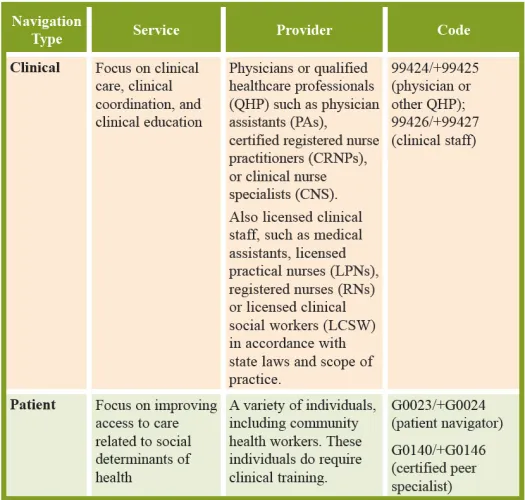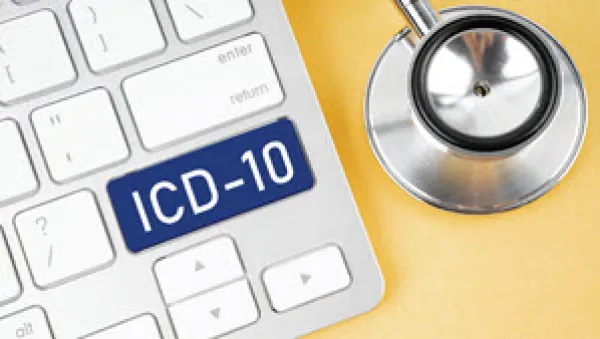Oncology & Hematology Coding Alert
View These 3 Infusion Scenarios, Determine Separate E/M
Hint: Think above and beyond. Modifier 25 (Significant, separately identifiable evaluation and management service by the same physician or other qualified health care professional on the same day of the procedure or other service) draws a great deal of attention from the Office of Inspector General (OIG) to Centers for Medicare & Medicaid Services (CMS) to the AMA and even commercial payers, due to its frequent misuse. In the oncology space, depending on the scenario, you may use modifier 25 more often than coders for some other specialties. This is especially true since many cancer patients receive chemotherapy treatment and see their healthcare provider in the office on the same date of service and may present with significant side effects of treatment or exacerbation of their condition. Knowing when it is appropriate to append modifier 25 to an evaluation and management (E/M) visit is key to proper utilization and to decreasing the chance of raising a red flag with a payer. Understand Modifier 25 Modifier 25’s descriptor is a mouthful. However, in short, the modifier describes an E/M visit that went above and beyond what is usually included to perform the separate service. This means the documentation for the service should support that the rendering provider performed an E/M and addressed a problem that required more work than what is typically expected to be performed for the other procedure or service performed on the same date. You should only append this modifier to E/M codes and it is not restricted to a specific E/M service level, according to CPT® instructions. A separate E/M diagnosis code is not required. When a separate diagnosis is appropriate on each of the E/M and procedure, however, it provides further justification for coding a separate E/M using modifier 25 when properly supported by the documentation. Report Modifier 25 Appropriately Oncology patients may see their providers on the same day they receive a chemotherapy infusion. When this occurs, the provider must understand when a separate E/M service would not be appropriate and, therefore, no modifier would be necessary. That’s because infusion administration services include relative value units (RVUs) equivalent to a 99211 (Office or other outpatient visit for the evaluation and management of an established patient that may not require the presence of a physician or other qualified health care professional) E/M visit, which would involve the assessment work performed by the clinician involved in clearing the patient for treatment, oversight provisions and so on. The National Correct Coding Initiative (NCCI) edits are a good place to start when determining if a modifier is required, and reviewing documentation is the only way to determine if a separate E/M is supported. View These Scenarios for Appropriate 25 Use Here are three infusion encounter scenarios for you to review and determine if the provider has performed a significant, separate E/M service, and if you would bill using modifier 25. The following examples will help you understand the different types of visits that may or may not support modifier 25. Scenario 1: The patient presents to the office for a scheduled chemotherapy infusion appointment, and the provider sees the patient before going to the infusion suite. The patient is stable and has no additional problems or concerns for the provider to address. The provider reviews a few labs and determines that the patient can receive infusion on that day. Since the patient is doing well and the provider has simply cleared the patient for treatment, this encounter would not support a significant, separately identifiable E/M visit. You should not use modifier 25 to report both the infusion and a separate E/M code. Scenario 2: The provider sees a breast cancer patient in the office prior to their scheduled chemotherapy infusion appointment. The patient mentions to the provider that they have been experiencing severe nausea, vomiting, and diarrhea and are generally not feeling well. They have lost an unusual amount of weight and appear to be very ill and weak. The provider determines that the patient is extremely dehydrated and requests that the patient receive hydration, prescribes medication to relieve the patient’s symptoms, and holds treatment for that day. In this case, you can report an E/M code with modifier 25 for the hydration treatment administered that day. Scenario 3: A small cell lung cancer patient with bone metastasis presents for treatment. The patient is seeing their oncologist prior to treatment, and the physician notes laboratory testing and scans show possible progression of the disease. The physician determines that additional testing and restaging will be necessary, and orders CT and PET scans to determine if the current treatment is adequate. The physician will determine if a medication regimen change is necessary based on those scans. The physician notes the patient’s other concerns such as increased shortness of breath, diarrhea, and joint pain. The patient is sent to the infusion suite to receive their scheduled treatment. This scenario describes a patient who may have additional disease progression, is very ill with side effects of treatment, and who will be receiving additional testing. In this case, you should report the appropriate E/M level code with modifier 25 appended as supported by the documentation. You should also report the appropriate code for the treatment procedure. Modifier 25 Additional Recommendations It is equally important to note that, even if your providers wish to see their oncology patients at every scheduled infusion, coders and billers should not automatically append modifier 25. They must review documentation to ensure the E/M visit supports being billed in addition to the procedure or service. Getting providers to understand when a separate E/M visit is warranted is central to appropriate modifier usage. Often, providers think that, just because their patient has cancer or are receiving treatment, a monitoring E/M visit is needed even though there is no change to the treatment, no complaints addressed, and no change to the plan of care. One way to explain the concept of appending modifier 25 to a separate E/M visit is to tell providers they are essentially asking for additional reimbursement than what is already provided in the other procedure or service being performed. In asking for that additional reimbursement, the provider is saying the service required additional work and medical decision making (MDM) outside of what they would normally provide for that procedure or service. In many cases, this explanation is an eye opener, and it also forces the providers to understand just how important their documentation is to support their services. Nikki Taylor, MSHCI, COC, CPC, CPCO, CPMA, CRC, AAPC Approved Instructor McKesson

Related Articles
Oncology & Hematology Coding Alert
- News You Can Use:
Here’s the Big News in the 2025 Proposed Rule
No big surprise: Another rate cut is coming. The Centers for Medicare & Medicaid Services [...] - Modifier:
View These 3 Infusion Scenarios, Determine Separate E/M
Hint: Think above and beyond. Modifier 25 (Significant, separately identifiable evaluation and management service by [...] - HIPAA:
Examine These 3 Cases, Stay Safe from HIPAA Violations
Avoid the fate of these healthcare entities with solid training and compliance strategies. HIPAA violations [...] - You Be the Coder:
Beware Assigning High Level MDM for Cancer Dx
Question: If a patient has a cancer diagnosis, should be that be counted as an “acute [...] - Reader Questions:
Look Beyond Reimbursement When Reporting Z Codes
Question: Do the ICD-10-CM Z codes affect reimbursement, or are they strictly for statistical purposes? Washington [...] - Reader Questions:
Distinguish NCD From LCD
Question: What’s the difference between a national coverage determination (NCD) and a local coverage determination (LCD), [...] - Reader Questions:
Know This 2025 BIA-ALCL ICD-10-CM Guideline Update
Question: In addition to the new codes, are there any 2025 ICD-10-CM guideline updates that oncology [...]




